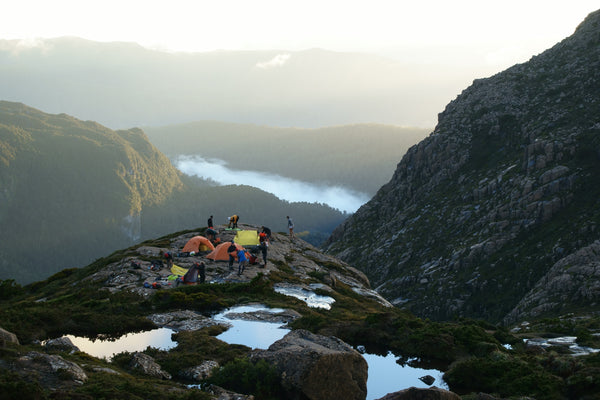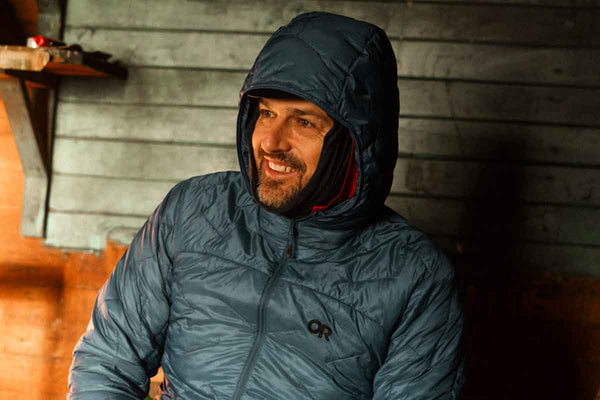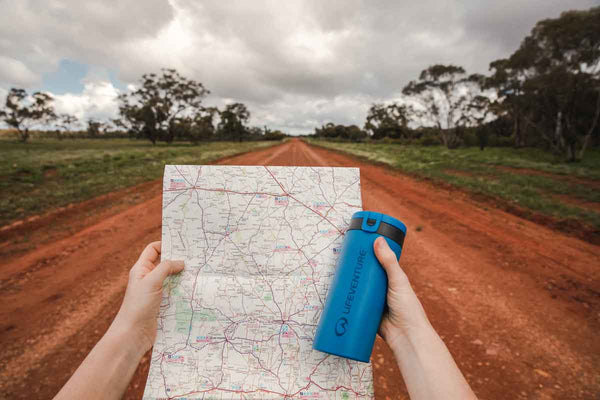
Tents Guide
Tents must cope with the vagaries and extremes of climate that walkers experience around the world. For example, a tent for walking in the Australian outback must be highly UV resistant, well ventilated and insect proof. Whereas a tent for camping in the Himalaya must be strong enough to cope with large dumps of snow and withstand gale-force winds.
There are four broad climate categories we use to describe tents; desert, tropical, temperate and alpine. Many people think of tents in ‘season ratings’ although these are slightly different from climate descriptions.
Desert Tents
Desert regions include North Africa, parts of South Africa, the Middle East, parts of Central Asia, South Western United States and much of outback Australia.
These areas can be brutally hot during the day, with very high UV exposure but quite cold at night, and occasionally, high winds blow dust and sand up in to large storms. While you can prepare for the cold with a warm sleeping bag, you may also find yourself spending considerable amounts of time inside the tent during the day, so ventilation is critical. High winds can crush a tent and blow in dust and sand to make life uncomfortable so you’ll need to be able to close any vents. It is therefore desirable to find a tent that has large amounts of mesh panelling on the inner, cross-ventilation via doors or windows on the fly, and an aerodynamic wind-shedding design.
Wedge-shaped tents are ideal when the lower end of the tent is pitched into the wind. These tents can often be pitched without the inner so that you just have a shady shelter like a tarp but more wind-proof.
Tropical Tents
The ‘tropics’ generally refer to equatorial regions and are characterised by sustained heavy rainfall, high humidity and high temperatures. As the tropics often present a plethora of mosquitoes, ground dwelling bities and other annoyances, tents that have full mesh screens to keep them at bay, as well as to provide maximum ventilation, are the right choice - and you can always impregnate your tent with permethrin to keep the creepy crawlies away!
These shelters need to be waterproof in heavy rain, yet light and airy when needed – it is important to have enough vestibule area for you gear when the heavens open! A lightweight alternative for one-person tropical shelters are the range of Hennessey hammocks. Fly materials with a siliconised treatment are ideal as they do not wet-out, they increase the UV rating of the fabric and are very lightweight.
Temperate Tents
Temperate climates cover much of the planet and are characterised by cool to warm temperatures with intermittent periods of bad weather. Australia’s eastern seaboard, Central Asia, the U.S., Europe, and much of South America are temperate. It is perhaps no surprise that these tents offer more options in design than any other.
The range of conditions that can be experienced in temperate climates means that these tents have to be versatile, which means combining two seemingly contradictory features; complete weather proofness with good ventilation. Because of the design demands there is a tendency for temperate shelters to be a little heavy so manufacturers reduce material weights to shave grams. However, thin tent floors can suffer from osmosis on wet ground so it is often wise to invest in a ‘footprint’ for added protection.
Two doorways are a plus for cross ventilation but will add weight, and exterior vents should be closable from the inside in case of sudden storms or changes in wind direction. People who are considering a one-person shelter should also take a look at Hennessey hammocks and bivy bags as they can be a very lightweight alternative to a tent.
Alpine Tents
Alpine conditions are the most severe of all with strong winds and potential for large accumulated amounts of snow. This environment includes the Polar regions and mountain ranges such as the Himalayas, the Andes, Rockies, and the snowy mountains of Australia.
Alpine tents must be durable enough to stand up to rough conditions for days at a time and are therefore made from extremely strong materials. To withstand wind gusts it is important that alpine tents have as much contact with the ground as possible so they normally boast many guy points. Double walled tent construction is normally preferred for alpine tents as it is easy to ventilate, warm when necessary and adds structural strength to the poles. The higher levels of UV exposure in alpine climates mean that siliconised fly fabrics are preferred - they provide protection without adding too much weight.
These tents also need a fully sealed, heavy duty tub floor for waterproofness, low height for shedding wind, multiple pole cross-over points for structural integrity, doors that unzip upwards, mesh panelling and external vents for condensation control, internal pockets and gear loft to stow stuff, at least one decent vestibule in which you can remove and stow wet gear, and most importantly, a rapid integral pitching system that is easy to complete with gloved hands in foul weather.
TIP: Always carry an emergency pole sleeve and some sticky-backed nylon patches should anything break or rip during a trip.
Glossary of Technical Tent Terms
Bamboozled by ‘tub floor’, ‘integral pitch’ and ‘geodesic dome’? Below is a glossary of tent terms…
Dome Design
A type of structure that has two poles that cross at least once. Typically dome tents have two poles that run diagonally across the tent with another pole(s) to help create vestibule space.
Footprint
For tents with lightweight floors, footprints are ground sheets whose shape is designed to correspond to a specific tent. A perfect fit means perfect protection of the tent floor without excess weight from a ground sheet that is too big.
Freestanding
A tent that does not require pegs to stand. Pegs maybe required to create vestibule areas, or for added strength in wind. Dome, geodesic dome and geodesic tunnel designs are all freestanding tents.
Geodesic Dome
A type of structure shaped like a piece of a sphere or a ball. This structure is comprised of a complex network of triangles that form a roughly spherical surface. The more complex the network of triangles, the more closely the dome approximates the shape of a true sphere. When tents evolved from the old ‘A-frame’ shape to modern designs they were frequently made in a dome shape and referred to as geodesic domes.
Geodesic Tunnel
A geodesic tunnel is essentially a dome that has been elongated into a tunnel but still uses the multiple cross over points, as in a geodesic dome.
Integral Pitch
The ability to pitch both the inner tent and flysheet at the same time. They are usually attached to each other with Velcro or bungy cord and the tent poles slide into sleeves on the flysheet. This also allows for the fly sheet to be pitched without the inner, for super lightweight trips.
Osmosis
Is the process by which water can be transported through a semi-permeable membrane (like the polyurethane coatings on a nylon fabric as found on most tents). It can be a problem if a tent floor is in contact with saturated ground, especially if the floor exterior is dirty as this will increase the rate of osmosis.
Panel Size
Is the area of material on a flysheet between tent poles. The smaller the size, the stronger the tent.
Ridge Pole
A third pole that runs over the roof of some tents but doesn’t extend to the ground. It affords greater rigidity and snow shedding abilities but without the added weight of a full length pole.
Seam Sealing
This process seals the internal stitching holes created along panel seams which can leak in wet weather. Can be achieved with an adhesive waterproof tape or PU/silicon gel.
Siliconised / Siliconized / Sil-Nylon
Weighing about 40% of an equivalent polyester fabric, siliconisation has become popular for two reasons; firstly, the exterior silicon treatment leaves a waxy-like surface which sheds water and therefore the fly never ‘wets out’. This means you can virtually shake your tent dry. Secondly, this treatment dramatically reduces the UV degradation of nylon (which is why polyester became popular in the first place), so manufacturers have shaved weight from tent flies as they can now use much lighter nylons instead of heavier polyesters and still make a long lasting fly.
Single Skin
A tent which has no flysheet, as opposed to a double skin tent which has an inner tent and a flysheet over the outside.
Tub Floor
The floor of the inner tent has sides which rise up like a bath tub. This provides a more waterproof design than having walls that join the floor at ground level.
Tunnel Design
A tent whose shape is basically a tunnel as opposed to a dome.
Vestibule
The space under the flysheet between the inner tent and fly. It can be used for gear storage and cooking.
Wedge Design
A type of tent design where the foot area is considerably lower than the main entrance of the tent.
Weights
Packed vs Carry - most manufacturers (in an effort to sound more competitive) only quote weights that include the tent, poles and fly – this is not the actual carry weight which must also include pegs, guys, repair kit and optional footprint.




